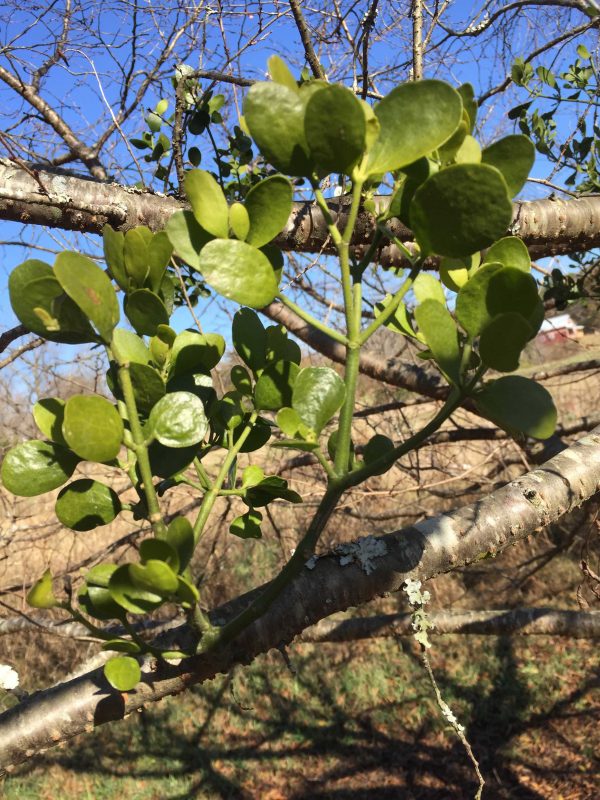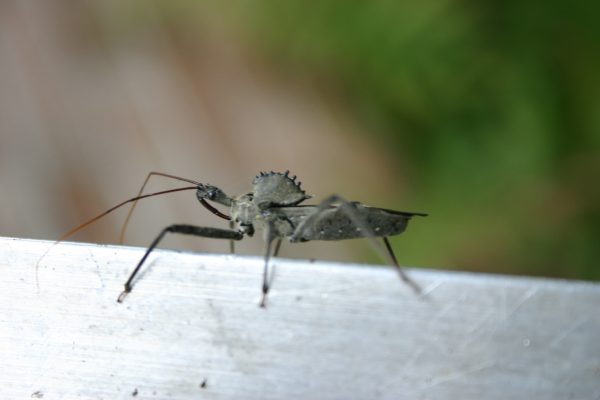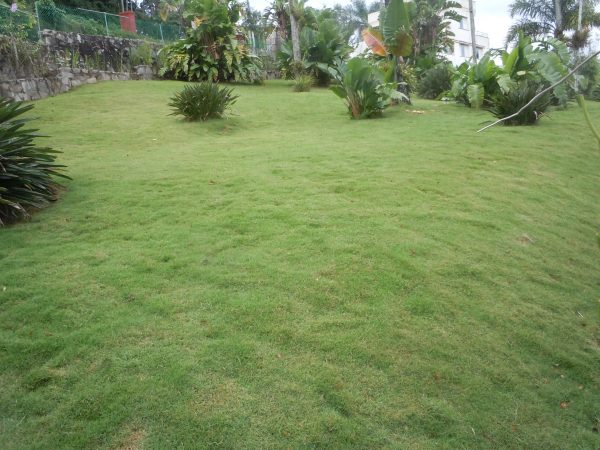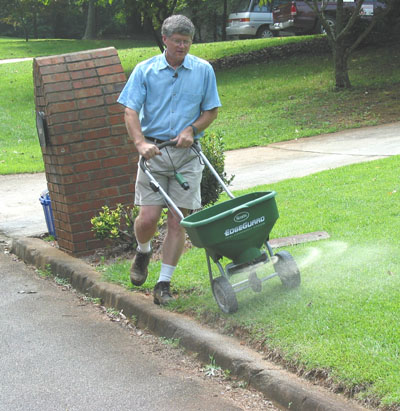Repairing a Broken Tree
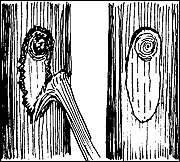
When a storm breaks tree limbs it can be heartbreaking to survey the damage. Trees, however, are remarkably able to recover from damage if given a little help. Here are some initial tips but the links at the bottom of this page are excellent too.
Resist the urge to overprune
Don’t worry if the tree’s appearance isn’t perfect. With branches gone, trees may look unbalanced or naked. You’ll be surprised at how fast they will heal, grow new foliage and return to their natural beauty.
Remove any broken branches still attached to the tree
Removing the jagged remains of smaller broken limbs is a common repair property owners can make after a storm. Done properly, it will minimize the risk of decay agents entering the wound. Prune smaller branches at the point where they join larger ones. Cut large broken branches back to the trunk or a main limb. As you prune, make clean cuts in the sequence shown here to help the tree to recover faster.
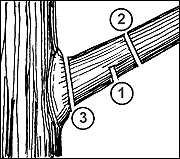
Prune large branches with this sequence of cuts
Repair torn bark
To improve the tree’s appearance and eliminate hiding places for insects, carefully use a sharp chisel or knife to smooth the ragged edges of wounds where bark has been torn away. Try not to expose any more of the cambium (greenish inner bark) than necessary because these fragile layers contain the tree’s food and water lifelines between roots and leaves.

Clean ragged wounds
Don’t top your trees
Untrained individuals may urge you to cut back all of the tree’s branches in the mistaken belief that reducing the length of branches will help avoid breakage in future storms. Although storm damage may not allow for ideal pruning cuts, professional arborists say that “topping” — cutting main branches back to stubs — is one of the worst things you can do to a tree. Stubs tend to grow back many weakly attached branches that are even more likely to break when a storm strikes.
Also, the tree will need all its resources to recover from the stress of storm damage. Topping the tree would reduce the amount of foliage, on which the tree depends for the food and nourishment needed for regrowth. A topped tree that has already sustained major storm damage is more likely to die than repair itself. At best, its recovery will be retarded, and it will almost never regain its original shape or beauty.
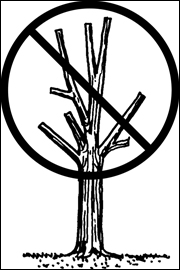
Don’t top your trees!
If you need an arborist’s help: Georgia Arborist Association
This article from Michigan State University gives some great hints:
Repairing Storm Damage To Trees
And here is one from Iowa State:
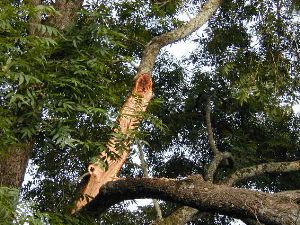
Split pecan limb



